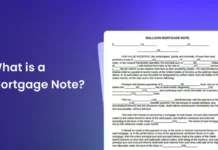As the owner of a food-related business, we know that you understand the importance of acquiring the ISO 22000:2018 certificate and building an effective Food Safety Management System (FSMS). However, we also understand that you are confused and do not know where to start. This is exactly why a gap analysis was created, to help business owners and top management understand what steps they must take to achieve compliance and improve their management system. In this article, we will talk about the ISO 22000 gap analysis checklist.
What is a Gap Analysis?
A gap analysis can be described as a structured evaluation done before the final certification audit to iron out any remaining deficiencies in the management system. The gap analysis aims to identify discrepancies between the current practices and those outlined in the ISO standard. At the end of the evaluation, business owners or the top management are presented with a customised report that provides a step-by-step action plan, helping the management decide what steps to take next to achieve compliance. Gap analysis like the ISO 22000 gap analysis checklist version 2018, helps align the documents, gauge the personnel’s awareness and competency, improve the processes’ efficiency, and achieve compliance with ISO 22000 certification or other types of ISO standard requirements.
ISO 22000 Gap Analysis
Now that you have understood what a gap analysis is, let us talk about the evaluation in the context of ISO 22000. The analytical techniques of the gap analysis are utilised to identify the gaps in the efficiency and compliance of an FSMS. Although an internal audit is carried out after establishing the FSMS, a gap analysis is carried out beforehand to help you understand how to create a compliant FSMS. This tool will allow you to compare your food-related business’s current food safety practices and processes with the requirements of the new ISO 22000. The evaluation will pinpoint the areas that fall short of the standard to determine where to focus your attention. ISO 22000 certification cost is different in each organisation. You should leave the cost determination to an ISO consultant.
ISO 22000 Gap Analysis Checklist Version 2018
The checklist scrutinises every clause of the ISO 22000:2018 standard, breaking each section into easy-to-follow questions. The business owners must go through the checklist to understand if they are adhering to the recommendations or if they need to create relevant modifications or new processes to meet this requirement. Essentially, the ISO 22000:2018 gap analysis checklist contains the following:
-
In the section dedicated to the context of the organisation, the organisation is recommended to identify, review and update information related to external and internal issues that can impact the safety of the food products. The context can be facilitated by considering external and internal issues, which are not limited to legal, technological, competitive, market, cultural, social, economic, environmental, cyber security, and food fraud factors. The section also asks the organisation to determine the expectations of all relevant parties and how it plays into determining the scope of the FSMS.
-
Under the leadership clause, the top management must find ways to demonstrate its commitment to the FSMS and ensure that the resources needed for the effective functioning of the management system are available and appropriately integrated into the organisation’s business processes. Moreover, the top management must communicate the importance of effective food safety management and conform to the safety management requirements across the organisation.
-
Under the planning section, all the actions to address risks and opportunities are listed. Therefore, it helps the organisation plan actions to address risks and opportunities, integrate and implement these actions into the food safety management processes, and evaluate the effectiveness of these actions.
-
Under the section support, the ISO 22000 gap checklist helps the organisation consider the capability of any constraints on the existing internal resources and identify any necessary resources from external sources to amplify the efficiency of the FSMS.
-
Under the operation section, the document helps the organisation control planned changes and review the consequences of any unintended changes, taking all necessary action to mitigate any adverse effects.
-
Under the performance evaluation section, the gap analysis checklist helps the organisation determine what needs to be monitored and measured, the monitoring methods, when the monitoring should be performed and how the results should be analysed and evaluated. This includes identifying trends that indicate a higher incidence of potentially dangerous process failures and providing evidence that corrective actions were effective.
-
Under the last section, namely, improvement, the ISO 22000 checklist helps the organisation test the effectiveness of corrective actions and prevent non-conformities. It teaches the organisation to react to the nonconformities as applicable by taking steps to control the non-conformity, dealing with the consequences and evaluating the need for action to eliminate the cause of the non-conformity so that it does not re-occur. This section also deals with updating the FSMS by reviewing the hazard analysis, establishing a hazard analysis control plan, and ensuring that the Prerequisite Requirements (PRP) activities occur as planned.
Hiring an ISO 22000 consultant will help you get a better understanding of necessary steps through the obtaining process.
Get ISO 22000 With Edara Systems Help
The ISO 22000 gap analysis checklist version 2018 is a self-assessment tool that can help business owners pinpoint where they fall short of compliance. If you are looking for a professional ISO consultant to ask your questions about ISO and its obtaining process or anything related to ISO topic, Edara System is what you need! Just fill the pop-up form on Edara Systems website to contact their expert consultants. They will help you get ISO 22000 with no gap!



































































